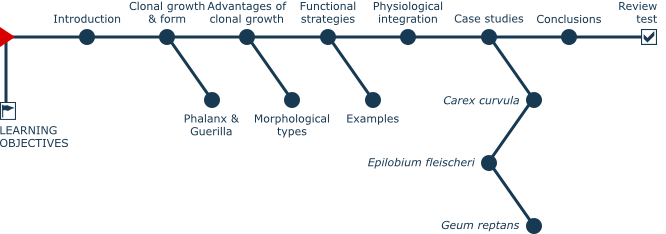Clonal growth and longevity in alpine plants
Clonal growth strategies are abundant in alpine habitats. Nevertheless, long-lived giant rosette plants with a single big bang reproduction are common in tropical regions at high altitude. The complex life cycle of clonal pioneer species will be used to illustrate the diversity of clonal growth. The advantages of clonal growth include a high persistence in time and space, physiological integration and high tolerance to stress, spreading and foraging, as well as division of labour among parts of a clone. Important trade-offs (sex vs. clones, early vs. late flowering, persistence vs. dispersal), patterns of genetic diversity and factors important for species distribution in a naturally fragmented landscape will be explored.

